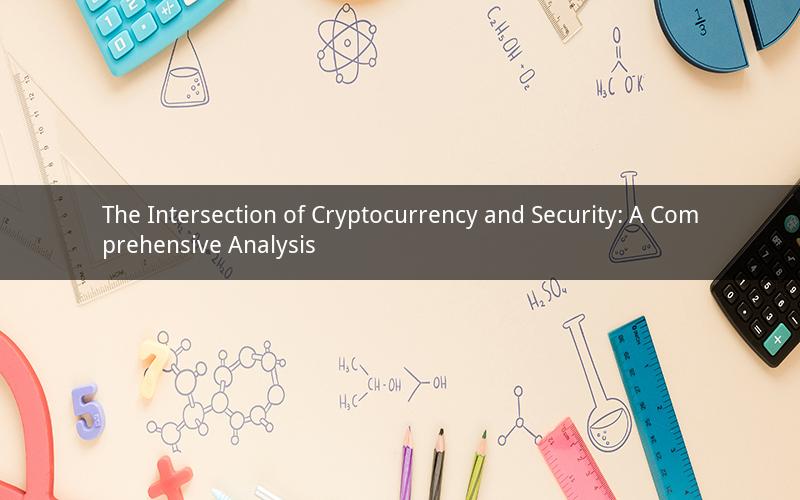
Introduction:
In the rapidly evolving digital landscape, cryptocurrencies have emerged as a revolutionary force, challenging traditional financial systems. With this rise, concerns regarding security have become a focal point for both enthusiasts and critics alike. This article delves into the intricate relationship between cryptocurrency and security, exploring the various aspects that define the landscape of security in the crypto space.
Section 1: Understanding Cryptocurrency Security
1.1 Definition of Cryptocurrency Security:
Cryptocurrency security refers to the measures and protocols implemented to protect digital assets, such as cryptocurrencies, from unauthorized access, theft, and loss. It encompasses various layers, including the underlying blockchain technology, wallet security, and overall network security.
1.2 Importance of Security in Cryptocurrency:
The decentralized nature of cryptocurrencies makes them susceptible to security threats. Ensuring the safety of digital assets is crucial for maintaining trust in the crypto ecosystem and fostering widespread adoption.
Section 2: Challenges in Cryptocurrency Security
2.1 Vulnerabilities in Blockchain Technology:
While blockchain technology is generally secure, certain vulnerabilities can be exploited by malicious actors. These include smart contract vulnerabilities, consensus mechanism weaknesses, and quantum computing threats.
2.2 Wallet Security Concerns:
The security of cryptocurrency wallets is a critical factor in ensuring the safety of digital assets. Types of wallets include hot wallets, cold wallets, and hardware wallets, each with its own set of security challenges.
2.3 Phishing and Social Engineering Attacks:
Phishing and social engineering attacks are prevalent in the crypto space, targeting unsuspecting users to steal their private keys and drain their wallets. Recognizing these threats and implementing preventive measures is essential.
Section 3: Security Measures in Cryptocurrency
3.1 Blockchain Security Enhancements:
To address vulnerabilities in blockchain technology, various measures have been implemented. These include improved consensus mechanisms, enhanced smart contract security protocols, and research into quantum-resistant cryptographic algorithms.
3.2 Wallet Security Best Practices:
To secure cryptocurrency wallets, users should adopt best practices such as using strong passwords, enabling two-factor authentication, and keeping private keys offline. Regular backups and secure storage are also crucial.
3.3 Network Security:
Network security plays a vital role in protecting the crypto ecosystem. Measures include implementing firewalls, intrusion detection systems, and regular security audits to identify and mitigate potential threats.
Section 4: Government and Regulatory Approaches to Cryptocurrency Security
4.1 Regulatory Frameworks:
Governments around the world are working to establish regulatory frameworks for cryptocurrencies, aiming to strike a balance between innovation and security. These frameworks often address issues such as money laundering, fraud, and investor protection.
4.2 International Collaboration:
International collaboration is crucial in combating cryptocurrency-related crimes. Sharing information, best practices, and resources among countries can enhance the overall security of the crypto space.
Section 5: Future Outlook and Challenges
5.1 Advancements in Technology:
As technology continues to evolve, new security measures and protocols will be developed to address emerging threats. The integration of artificial intelligence, machine learning, and blockchain advancements will play a significant role in securing the crypto space.
5.2 Education and Awareness:
Educating users about cryptocurrency security is essential to mitigate risks. By promoting awareness and providing resources, users can better protect their digital assets.
5.3 Continuous Monitoring and Adaptation:
The crypto landscape is dynamic, and security threats are constantly evolving. Continuous monitoring, adaptation, and collaboration among stakeholders are crucial to maintaining a secure environment.
Conclusion:
The relationship between cryptocurrency and security is complex, with numerous challenges and opportunities. By understanding the various aspects of cryptocurrency security and implementing robust measures, the crypto ecosystem can continue to thrive while ensuring the safety of digital assets.
Questions and Answers:
1. Question: What are the main vulnerabilities in blockchain technology that can be exploited by malicious actors?
Answer: The main vulnerabilities include smart contract vulnerabilities, consensus mechanism weaknesses, and quantum computing threats.
2. Question: How can users protect their cryptocurrency wallets from unauthorized access?
Answer: Users can protect their wallets by using strong passwords, enabling two-factor authentication, keeping private keys offline, and regularly backing up their wallets.
3. Question: What role does government and regulatory frameworks play in cryptocurrency security?
Answer: Government and regulatory frameworks help establish standards and guidelines for the crypto industry, addressing issues such as money laundering, fraud, and investor protection.
4. Question: How can users stay informed about the latest security threats in the crypto space?
Answer: Users can stay informed by following reputable news sources, attending conferences and webinars, and participating in online forums and communities.
5. Question: What are the future challenges in cryptocurrency security?
Answer: Future challenges include advancements in technology, the need for continuous monitoring and adaptation, and the integration of emerging technologies such as artificial intelligence and quantum computing.